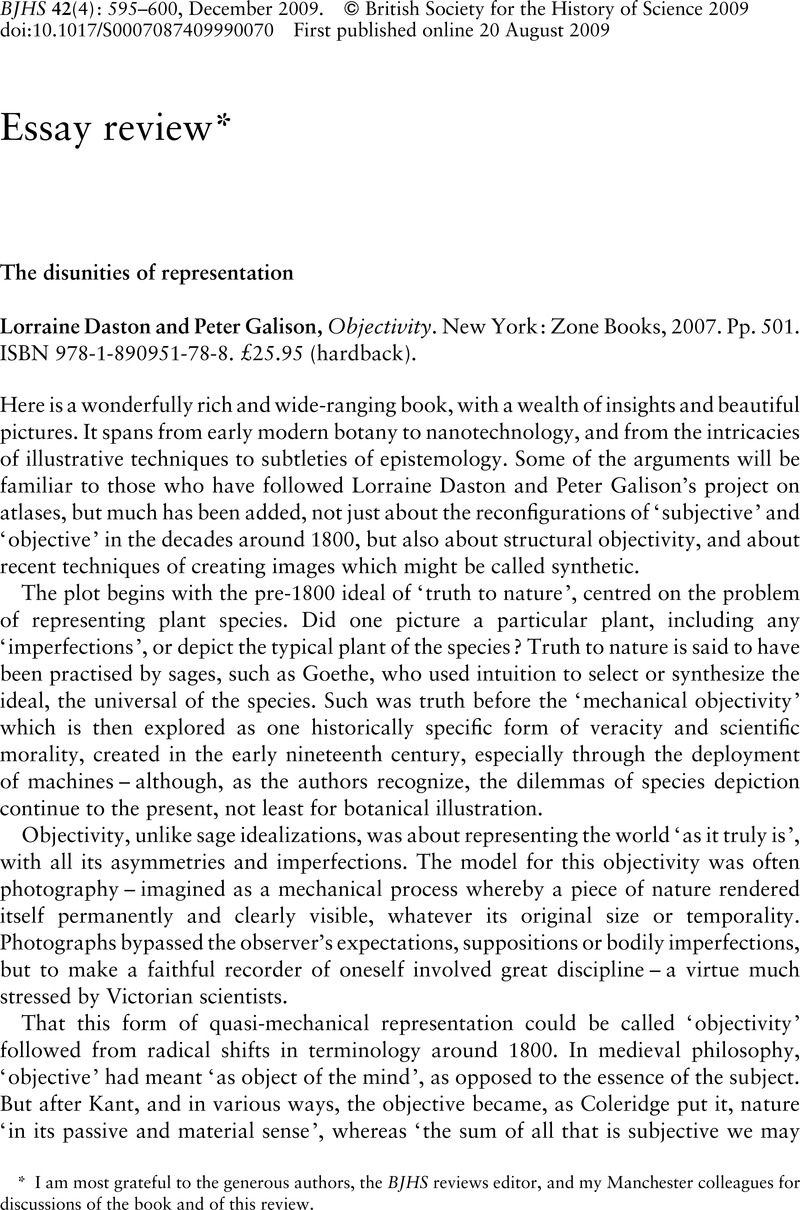Published online by Cambridge University Press: 20 August 2009

1 J. Tucker, Nature Exposed: Photography as Eyewitness in Victorian Science, Baltimore, 2005.
2 J. Snyder, ‘Visualisation and visibility’, in Picturing Science, Producing Art (ed. C. A. Jones and P. Galison), London, 1998, 379–97.
3 For more on this approach to the period, and more generally on ‘levels’ of knowledge, see J. V. Pickstone, Ways of Knowing: A New History of Science, Technology and Medicine (Manchester, 2000 and Chicago, 2001); and idem, ‘Working knowledges before and after c. 1800: practices and disciplines in the history of science, technology and medicine’, Isis (2007), 27, 489–516. I would note here that this approach can also be linked to the Kantian shift explored by Daston and Galison, and to their discussions of structural objectivity and synthetic representations.
4 The links between mathematical sciences and microscopy are beautifully developed in J. Schickore, The Microscope and the Eye: A History of Reflections, 1740–1870, Chicago, 2007. One may also note that checking analytical accounts against accurate measures became a recognized method of discovering ‘residuals’ in both chemistry and physics. ‘Virtue’ could bring novel rewards.
To send this article to your Kindle, first ensure no-reply@cambridge.org is added to your Approved Personal Document E-mail List under your Personal Document Settings on the Manage Your Content and Devices page of your Amazon account. Then enter the ‘name’ part of your Kindle email address below. Find out more about sending to your Kindle. Find out more about saving to your Kindle.
Note you can select to save to either the @free.kindle.com or @kindle.com variations. ‘@free.kindle.com’ emails are free but can only be saved to your device when it is connected to wi-fi. ‘@kindle.com’ emails can be delivered even when you are not connected to wi-fi, but note that service fees apply.
Find out more about the Kindle Personal Document Service.
To save this article to your Dropbox account, please select one or more formats and confirm that you agree to abide by our usage policies. If this is the first time you used this feature, you will be asked to authorise Cambridge Core to connect with your Dropbox account. Find out more about saving content to Dropbox.
To save this article to your Google Drive account, please select one or more formats and confirm that you agree to abide by our usage policies. If this is the first time you used this feature, you will be asked to authorise Cambridge Core to connect with your Google Drive account. Find out more about saving content to Google Drive.